REHAB-PAL
Gaming therapy for children with
cerebral palsy — guided by a robot coach
Gaming therapy for children with
cerebral palsy — guided by a robot coach
Rehabilitation Engagement at Home with a socially Assistive Robot for Pediatric Adherence (REHAB-PAL)
REHAB-PAL is an active video game and robot system for children undergoing rehabilitative physical therapy. The system is designed to provide companionship and engagement to help children with cerebral palsy CP or similar neurological conditions improve their adherence to prescribed home care exercise regimens.
The game addresses the need for a more engaging and interactive option to supplement in-person therapy. Therapists can tailor a specific course of treatment to help with a particular condition. The goal is to increase exercise frequency and enable more targeted and personalized treatment plans. A virtual or physical robot companion helps pediatric patients feel camaraderie, which motivates them to practice more exercises at home.

“The kids really like engaging with the robot. Next, we think it would be advantageous to focus on interactions with the robot and make it more of a coach and interactive companion.”

Leonard Eusebi
Senior Scientist and Principal Investigator on REHAB-PAL
The challenges with current therapies
Children with cerebral palsy (CP) often require more physical therapy than the available clinical session time allows for. At-home treatment is necessary, but it can be difficult, repetitive, and frustrating for the patient. Maintaining adherence and engagement is critical to the effectiveness of their rehabilitation therapy regimen. Handouts with static images of the prescribed exercises lack the inspiration and feedback that an interactive video game can provide.
REHAB-PAL provides many benefits:
- Guidance to help patients do the exercises correctly
- Data to help therapists understand patients’ needs
- Accountability to motivate patients
- Encouragement and feedback about patient progress
The team consulted with therapists at Spaulding Rehabilitation Hospital’s Motion Analysis Lab to develop a library of poses and exercises. An avatar or robot provides patients with a time limit, feedback, and a score on whether they matched the pose. REHAB-PAL also offers tailored suggestions on what to work on in the next session and recommendations to improve technique.
The Charles River team hopes to expand the library of robot animations, increase the robot’s interactive abilities, and further improve REHAB-PAL’s effectiveness by including the ability to detect compensatory movements. These added features would increase engagement with REHAB-PAL and lead to better recovery outcomes for patients.
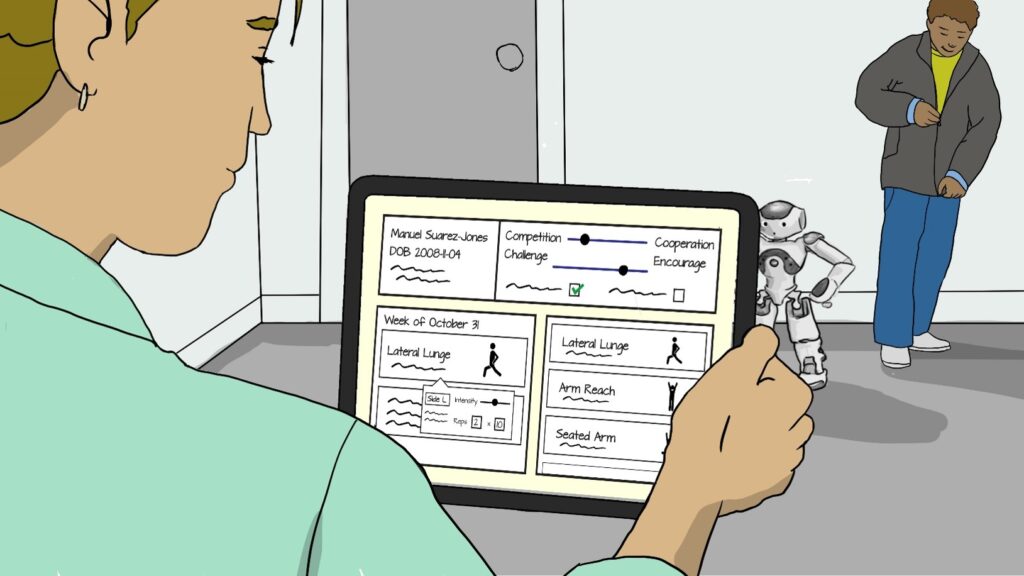
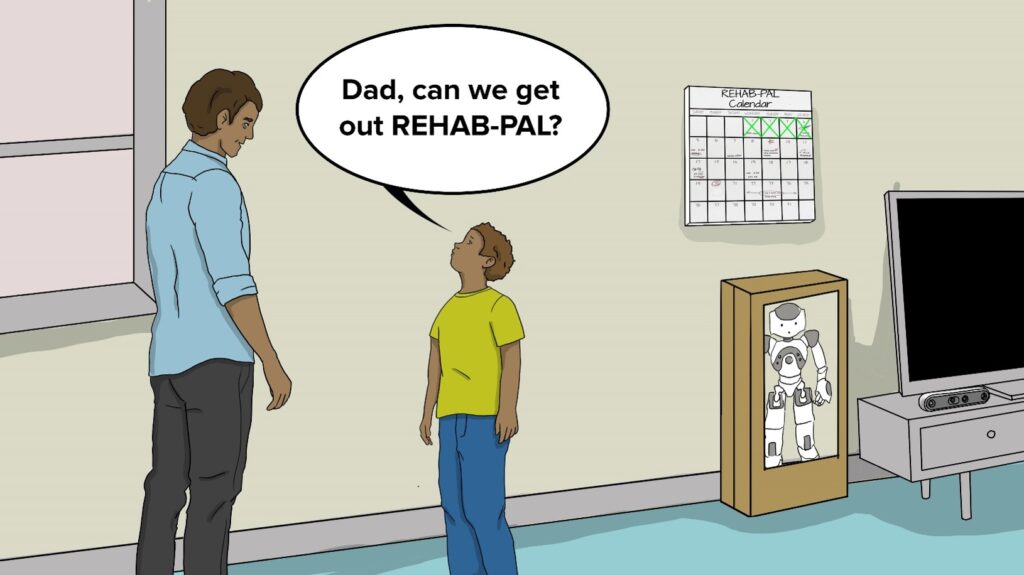

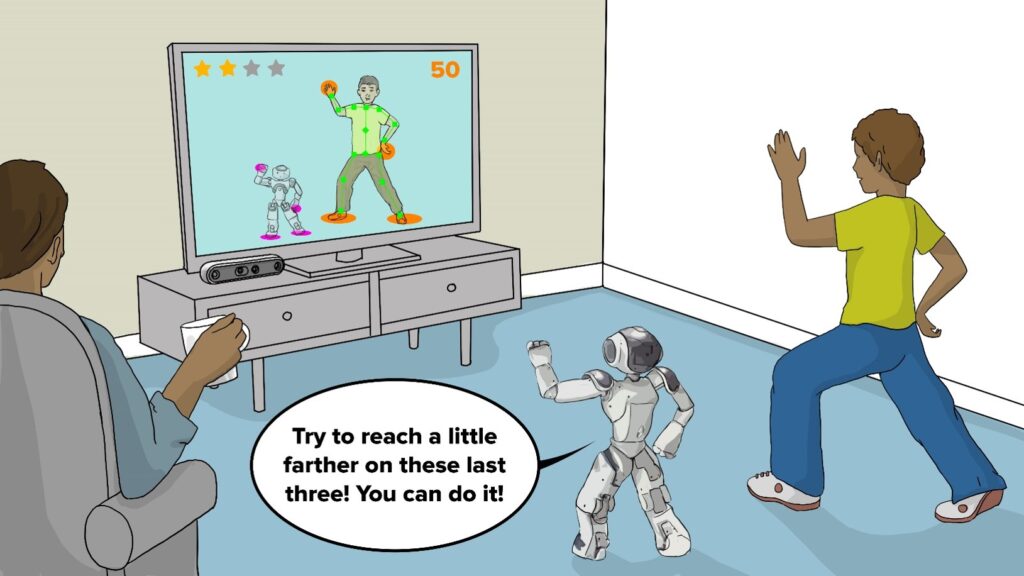
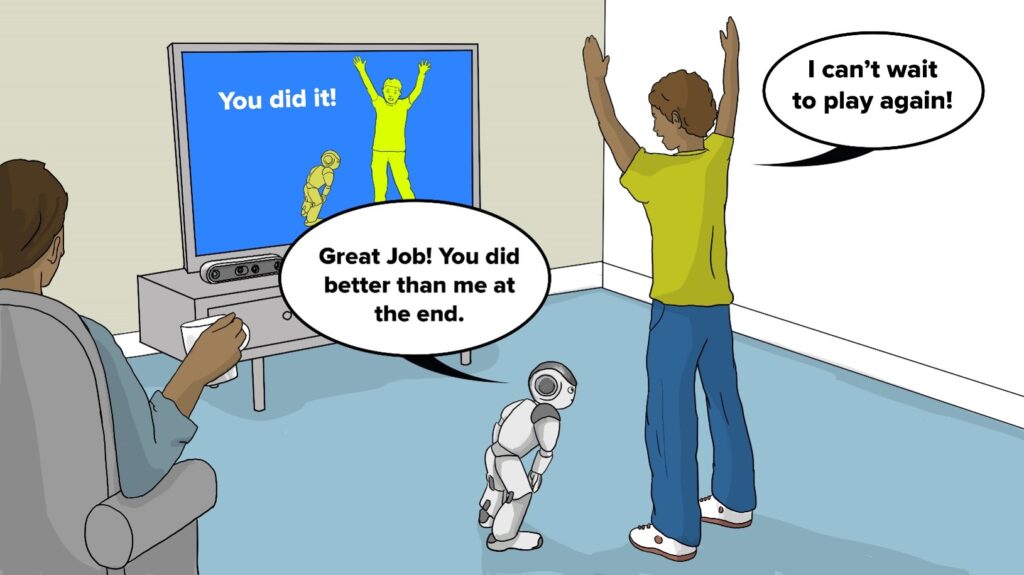
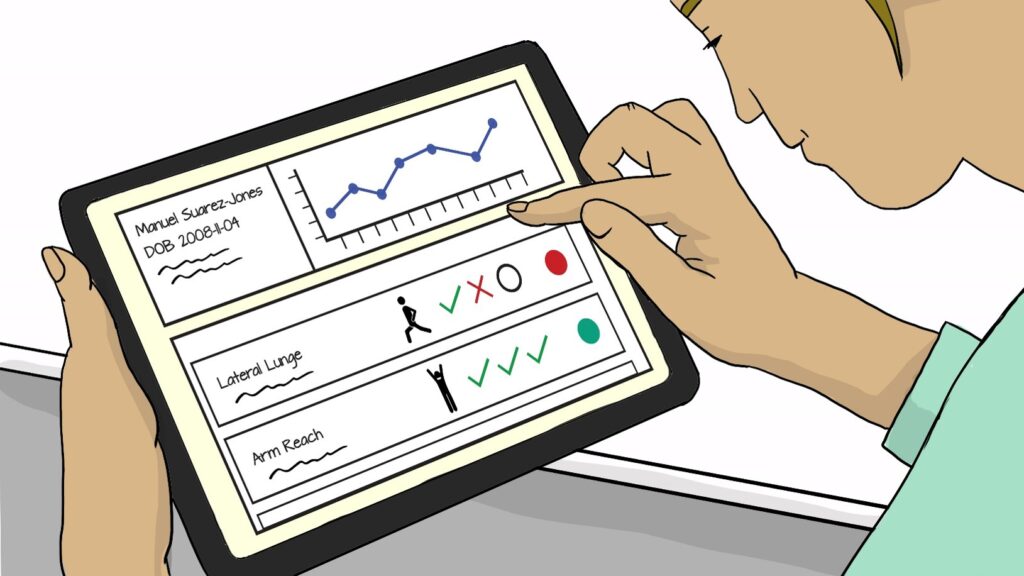
The NIH National Institute of Child Health and Human Development (NICHD), National Center for Medical Rehabilitation Research (NCMRR), supported the project. The Small Business Innovation Research (SBIR) funding enabled the Charles River team to build the active video game, create a pose library, program the robot, and have a small cohort of patients try it and provide feedback.
Contact us to learn more about REHAB-PAL and our other health and medical capabilities.
Research reported in this publication was supported by the Eunice Kennedy Shriver National Institute of Child Health & Human Development of the National Institutes of Health under Award Number 1R43HD106834-01. The content is solely the responsibility of the authors and does not necessarily represent the official views of the National Institutes of Health.
